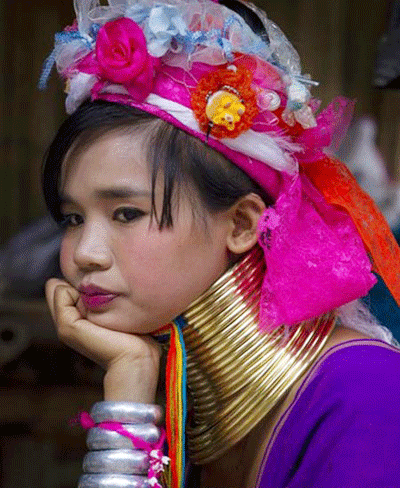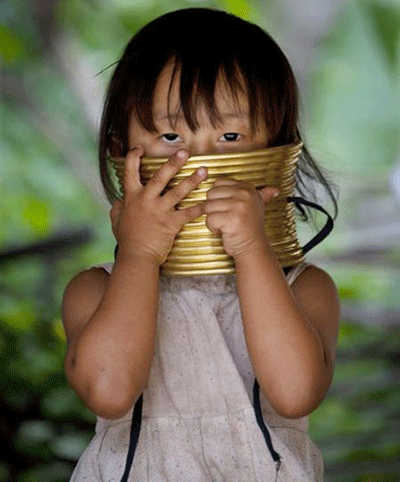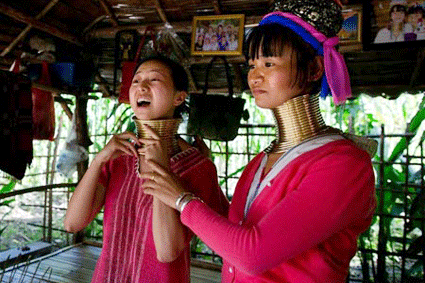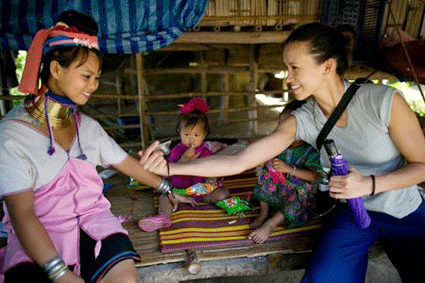Long-necked girls become tourist specialties

According to Padaung custom, when girls reach puberty, they are given copper rings to wear.
The shaman must use divination to determine the date and time for the first ring-wearing ceremony for the baby girl. Oil is applied around the baby’s neck and massaged for several hours before the ring is worn. To avoid pain, soft cloths are placed around the neck and removed after a while.

Every two years, another bracelet is worn, and so on, until the girl reaches marriageable age. Some women wear up to 25 bracelets.
The rings push the chin up while pushing the collarbone and ribs down giving the girls a long neck.

Padaung women always keep their hair long, tied up high to reveal the necklace they consider a symbol of nobility.
There are many theories to explain why Padaung women wear necklaces. Some say that Padaung ancestors wore necklaces from very early times to avoid being enslaved or attacked by tigers.
A legend tells that in ancient times, when humans angered the gods, a disaster of tigers eating women appeared in the world.
Because of this fear, the Padaung ancestors forced all women to wear brass rings for protection.
Another myth says that a tall dragon gave birth to the first Padaung ancestor, so the Padaung people keep the custom of wearing rings to pay homage to their ancestors.
According to another story, King Padaung once visited the land of Dien Viet (Van
The princess loved wearing the necklaces and refused to take them off. Since then, all Padaung women have worn necklaces. In addition to their necks, Padaung women also wear many bracelets on their arms and legs.
Padaung Karen Village is an artificial eco-village that is widely regarded as a center for preserving ethnic values.
Some are concerned about the rights of villagers and fear they will become tools for those opening tourist areas to make a profit.

Padaung Karen village still attracts a large number of tourists every year with an entrance fee of 500 baht (about 350,000 VND) per person.
According to Datviet-M
